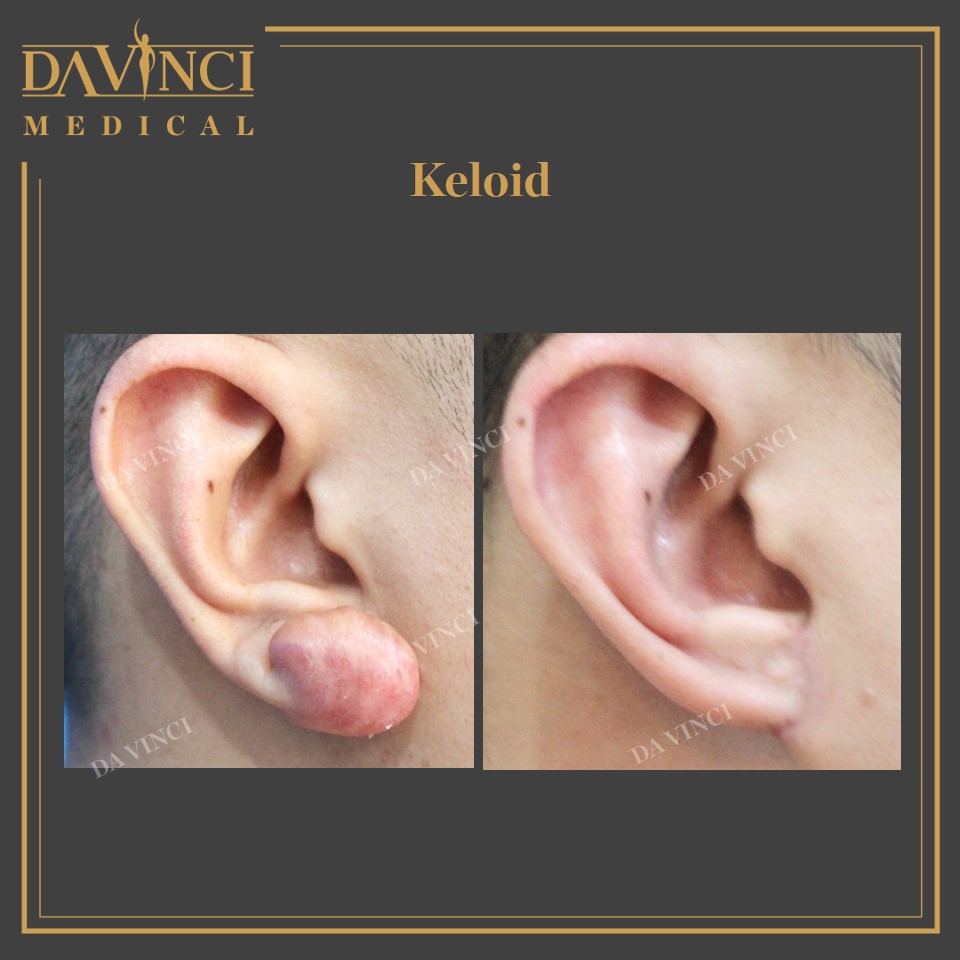Aesthetic Dermatology Keloid & Hypertrophic Scar


Keloid & Hypertrophic Scar Solutions Solutions
Gain your confidence back with Da Vinci Medical
Keloid
A keloid is an excessive production of scar tissue that can result from a cut, burn, surgery, scratch or even acne and body piercing. A keloid scar grows larger than the original wound itself. These can develop even when there is no obvious damage to the skin at all. Keloids occur when collagen (a structural protein in the skin) overgrows and produces a lump much bigger than the wound itself. Keloids differ from hypertrophic scars by the fact that they spread beyond the area of the wound. Keloids are often shiny, reddish in colour, hairless, feel firm and rubbery to the touch and are mostly painless. However, sometimes keloids can be itchy or painful. It can take up to a month for a keloid scar to appear and these can continue growing for months and even years. Keloid scars affect about 10-15% of all wounds.

Most common causes of Keloid
It is not fully understood why these types of scars occur but keloids form due to an over production of collagen. These exaggerated scars are most likely to occur between the ages of 10 and 30, usually when wounds are under pressure or get infected. They can affect anyone but are more common in darker skin types and certain areas of the body. The most commonly affected parts of the body are the upper chest, shoulders and earlobes (usually due to pierced ears). Other commonly affected areas include the lower legs, chin and neck. In people with darker skin, they also often appear in the beard area – a condition known as pseudofolliculitis barbae, which is worsened by shaving and irritating the skin above ingrowing hairs. This can be particularly distressing for men and women who feel the need to shave on a daily basis. Keloids can develop or even become larger during pregnancy. The tendency to scar in this way can run in families. Keloids often occur following chickenpox, scratches, acne, vaccination injections, burns, surgical incisions and traumatic wounds.
Hypertrophic Scars
Hypertrophic scars are an abnormal type of scar that form as a result of trauma or injury. Hypertrophic scars are raised, thickened and wider when compared with normal scar. As a result, the appearance is often a cosmetic concern when compared to a normal scarring response. As well as being a cosmetic concern they can also be itchy and painful. Hypertrophic scars differ from keloid scars in that they do not grow beyond the margins or the wound or injury.
Hypertrophic scars are more prevalent in the following:
- Darker skin types
- Areas where skin heals under tension
- Ears/Chest/shoulders/upper arms
- Following surgery
- Breast implant scars / abdominal procedure scars
- Areas of constant flexion and extension such as skin over joints.
Hypertrophic scars are essentially overgrown scars. The body has failed to recognise when to stop the scarring process. Myofibroblast cells responsible for wound healing have produced too much collagen and an overgrown scar. The ongoing scarring process causes low grade inflammation and blood vessel formation. This inflammation and blood vessel formation cause the scar to appear red. It also results in irritation, itch and pain.
Most common causes of Hypertrophic Scar
Hypertrophic scars are often caused by burn injuries. Acne often results in indented scars but can also cause raised hypertrophic scars. Body piercings and small cuts can result in healing with hypertrophic scarring. Surgical scars can also become hypertrophic.
Our approach
Our team of experts have the medical knowledge and aesthetic understanding to determine the treatment that can let you get rid of Keloids and Hypertrophic Scar. A successful treatment at Da Vinci Medical Clinics will lead you into a more comfortable and confident life.

